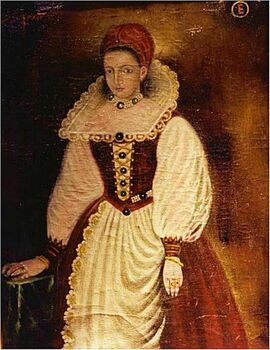From the Medieval Research Blog: "Unearthing the Vampire: Succubi, Secrets, and Women’s Monstrosity"
 Remains in the Cemetery of Pien, Poland
Remains in the Cemetery of Pien, PolandEarlier this month, the corpse of a woman with a protruding front tooth and a sickle positioned across her throat was discovered in a 17th-century cemetery near the village of Pien in south-eastern Poland. The sickle was meant to keep the body contained: should the deceased woman have attempted to rise from her grave, the blade would have promptly beheaded her. Coupled with the woman's prominent incisor, the placement of the sickle suggests that those who tended to her burial may have feared she was a vampire.
Professor Dariusz Poliński from Nicholas Copernicus University observed, “The sickle was not laid flat but placed on the neck in such a way that if the deceased had tried to get up most likely the head would have been cut off or injured.”
The woman was found with the remains of a silk head dressing, which indicates she was someone of high social status, as such a garment would have been an expensive commodity. Of course, this woman would be neither the first aristocrat nor the first woman to be suspected of vampirism.
In addition to the positioning of the sickle and her prominent incisor, a padlock was secured around the big toe of the woman’s left foot, which may be meant to symbolize “the closing of a stage and the impossibility of returning,” according to Poliński.
 Elizabeth Báthory
Elizabeth BáthoryElizabeth Báthory was a Hungarian noblewoman and history’s most prolific female serial killer, who tortured and murdered as many as 650 girls and women between 1590 and 1610. Her association with vampirism manifests in the folklore that describes the countess’s ritual of bathing in her virgin victims’ blood to retain her youthful beauty. Neither the number of victims nor her bathing activities are confirmed. Nevertheless, a servant girl testified that she saw the figure recorded in one of Báthory’s private books, and another witness stated that he had seen the countess covered in blood. Colloquially, she became known as the Bloody Countess and, more contemporarily, Lady Dracula....
This is an excerpt from "Unearthing the Vampire: Succubi, Secrets, and Women’s Monstrosity" by Dr. Emily McLemore (Teaching Scholar of English at Notre Dame). Read the full story.